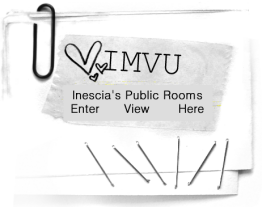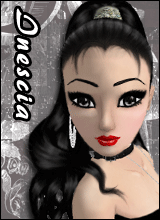~(IZ) The Arepa Cart~
*This is my (IZ) The Arepa Cart*
DETAILS: *The Arepa Cart. This is my The Arepa Cart. A food cart that is the arepa cart, with a bicycle; made of platinum's, silvers and whites, greens and turquoises. The Arepa Cart is very detailed, very authentic looking; with a menu on display, condiments and meat cooking. With three poses, one on sitting on the bicycle seat and two standing spots, one on each side of the cart. Arepa is a type of food made of ground maize dough, originating from the northern region of South America in pre - Colombian times, and is notable in the cuisines of Colombia and Venezuela.It is eaten daily in those countries and can be served with accompaniments such as cheese, cuajada - fresh cheese, various meats, chicken, avocado, or diablito - deviled ham spread or tuna, fish. It can also be split to make sandwiches. Sizes, maize types, and added ingredients vary its preparation. It is similar in shape to the Mexican gordita and the Salvadoran pupusa and others regions.The arepa is a pre - Colombian dish from the area that is now Venezuela and Colombia. Instruments used to make flour for the arepas, and the clay slabs on which they were cooked, were often found at archaeological sites in the area. Although it has not been specified in which country an arepa was cooked for the first time, it has been possible to define the oldest dates of the presence of maize in Colombia and in Venezuela. For example, In Colombia, the first record of the existence of corn dates from about 3,000 years ago, while in Venezuela the estimate is about 2,800 years ago. In other words, the creation of the arepa most likely happened almost simultaneously in both countries, but well before either territory became a country with demarcated borders.Throughout its history, the arepa has stayed mainly unchanged from the arepas that pre-Colombian native peoples would have consumed, making the arepa one of the few pre-contact traditions that have remained popular in the years since colonization.The arepa is a flat, round, unleavened patty of soaked, ground kernels of maize, or more frequently nowadays maize meal or maize flour that can be grilled, baked, fried, boiled or steamed. The characteristics vary by color, flavor, size, and the food with which it may be stuffed, depending on the region. It can be topped or filled with meat, eggs, tomatoes, salad, cheese, shrimp, or fish depending on the meal.The arepa is an iconic food in Colombia, with some 75 distinct forms of preparation. According to a study conducted by the Colombian Academy of Gastronomy, "The arepa is part of our cultural heritage and can be considered a symbol of national gastronomic unity."In 2006, the arepa was named the cultural symbol of Colombia in a competition organized by Semana magazine with support from Caracol TV, the Department of Culture and his program Colombia es Pasion.In the Paisa Region, the arepa is especially important to the local people and accompanies some times all meals of the day. In addition, arepas are strung into necklaces and placed around the necks of honored dignitaries as a sign of praise.In Colombia, the arepa is sold on a commercial level in neighborhood stores, chain supermarkets and market plazas and packaged with preservatives as a pre-molded white or yellow corn dough that is ready to grill or fry at home.It is also sold in the form of industrialized corn flour that requires hydration before preparation. In addition, arepas are sold by street vendors, in cafeterias, and in neighborhood stores. Restaurants of the Paisa Region offer a wide variety of arepas, including a unique style of stuffed arepa that can be filled with eggs, meat, or cheese.The Colombian Arepa Festival is celebrated in the following five major cities: Bogota, Ibague, Medellín, Cali, Barranquilla and Bucaramanga. According to the program calendar, each city takes turns organizing the festival between the months of August and December.The arepa is a symbol of Venezuelan gastronomy and one of the most common pre-Hispanic foods still popular in Venezuela.In Venezuela, there are different brands of precooked corn flour. Some of these brands are Juana, Demasa, CASA, Venezuela and Flour National Food Product (PAN Flour). The latter has become a generic name for all maize flours in the country given the phenomenon of the vulgarized brand.In 1960, Empresas Polar, under the slogan "La piladera is over!" launched the PAN precooked corn flour, obtained due to the procedure developed by the Venezuelan mechanical engineer Luis Alberto Caballero Mejias, that represented an important alternative to avoid the long process of making arepas with a pylon. The arepas can be cooked in four different ways: roasted, baked, boiled and fried. Another way to make arepas is using a Tosty Arepa, an appliance that, like precooked corn flour, revolutionized the way in which the arepas were prepared and reduced the preparation time. The Tosty Arepa is a creation of The company Oster de Venezuela, which dates back to 1989, has since been transformed into more modern and efficient models.According to a 2015 survey of the Venezuelan people, nearly 70 percent of the nation ate arepas on a regular basis. It is common for Venezuelans to eat arepas throughout the day, both as snacks and as sides to meals, creating a culture where these corn products can be found almost everywhere.The arepa is seen as a cornerstone of a Venezuelan diet, and in a good financial year, the average Venezuelan consumes about 30 kilos of the corn flour used to make the arepas. Venezuelan arepas are commonly filled with a great variety of different fillings, from beef and avocado to yellow cheese, varying widely by the location of where they are sold and the ingredients that can be obtained.
This is the The The Arepa Cart and only the The The Arepa Cart, just the The The Arepa Cart and nothing but the The The Arepa Cart!*










This is my: (IZ) The The Arepa Cart. Reviews are randomly gifted and appreciated.
Gracias for viewing and Gracias y Besitos for buying! Inescia.
Hola! I have eleven public rooms open for viewing always; see my many lines and many collections by clicking on the picture below and choosing the room you wish to view. I have set these rooms up so you can see some of my collections and lines that are available for sale in my catalog. Please feel free to enter and view.
Thank you so very much. Inescia.

My Developer Badge can be found here:

My Customer Appreciation Badge:





Code for the banner and display picture that I am using now:
~Catalog~
 ~Home Page~ ~Auto Bling~
~Home Page~ ~Auto Bling~


Code for my banner:



















 ~Home Page~
~Home Page~ 

